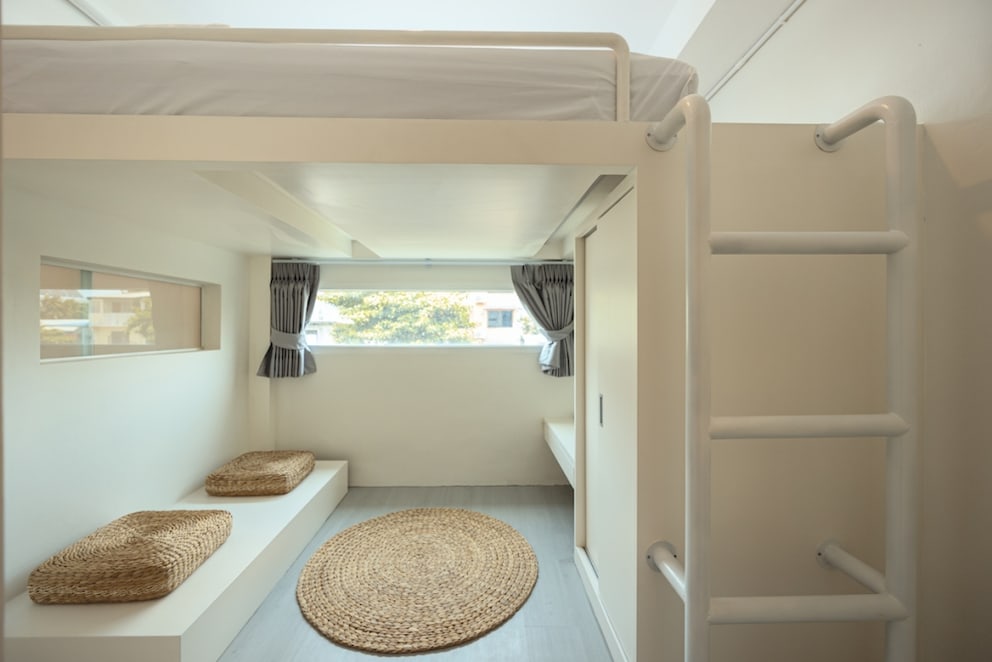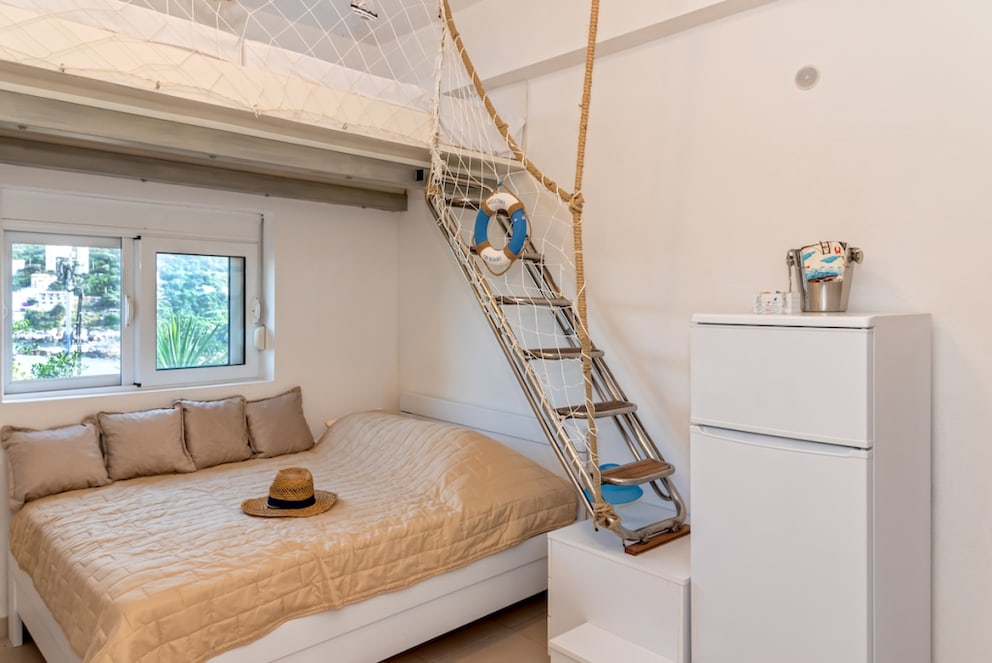June 9, 2024, 5:54 am | Read time: 5 minutes
Efficiency and multifunctionality are key factors when living in small spaces. A prime example of this is a loft bed for adults. The goal is to make optimal use of the room’s height to compensate for the lack of space, storage, and an unused ceiling. myHOMEBOOK author and interior designer Odett Schumann explains everything you need to know.
In children’s rooms, loft beds are a popular choice to provide the little ones with a sleeping area, retreat, and play paradise all in one. But for adults, such elevated bed constructions are increasingly becoming an option to cleverly furnish their homes due to rising rents and shrinking living spaces. After all, this way, space can be saved and used for other purposes. myHOMEBOOK reveals what you need to know about building a loft bed for adults.
Unusual Situations Require Unusual Constructions
Loft beds for adults are mostly used where space is limited and needs to be utilized efficiently. Whether in a student dorm, a studio apartment, or for couples who prefer an alternative, hippie lifestyle–in each of these living situations, important functions and zones must not be missing, even in tight spaces. It requires: Sufficient storage space for clothing and other personal items, a workspace with a desk and chair, if possible, a small lounge area outside the sleeping area, and of course, the bed itself. Without a second level, chaos would quickly ensue in the room, leading to discomfort.
How to Use a Loft Bed for Adults?

Traditionally, the newly added level is used as a bed, and the area below is converted into a lounge area. If the sleeping area is in a favorable position to the window, it also works well as a home office. However, the loft bed level doesn’t have to be the sleeping area. Some people prefer to use this spot in the room as a cozy retreat for meditating, listening to music, or watching TV. In this case, the bed usually moves below the construction, which can also be cozy.
Advantages of a Self-Built Loft Bed
Those who opt for a (self-built) loft bed certainly have more effort initially, but overall, they incur significantly fewer costs. Unless you choose a model from a carpentry shop. On average, a DIY loft bed costs between 200 and 500 euros (without a mattress), depending on the model, size, and material. What you get is a completely unique piece of furniture that matches your design, size, and wood type preferences and needs.
If you need more storage space for books or additional shelves in the room, you can consider this in the planning and integrate it into the construction. For access, you can choose between individual rungs, steps, or a ladder. And if you want a cozy lounge under the second level, it’s best to integrate dimmable LED spots on the underside.
Also interesting: Build a Bed from Pallets in 4 Steps
Plan Dimensions Carefully
The basic requirement for a loft bed for adults is clearly that the ceiling height is at least three meters. The first step in planning is to define how each area will be used in everyday life. Should the sleeping area be on top and the home office below? Or should the second level be the bed, with a small lounge area underneath? Once the layout is determined, the height of the added level must be set. Of course, your own height and the associated sense of space play a crucial role. It’s important to consider that about 80 to 100 centimeters are needed to the ceiling to sit upright without hitting your head.
When calculating, don’t forget the height of the mattress, the slatted frame, and the beam thickness. For example, too little distance between the mattress and ceiling can quickly create a claustrophobic feeling. In the case of a sloped ceiling, it’s advisable for the entrance and head side of the loft bed for adults to be at the highest point. This ensures maximum distance to the ceiling and minimal risk of injury.

What Should Parents Consider When Choosing a Loft Bed?

How to Properly Furnish a Bedroom with a Sloped Ceiling

Tricks to Create More Space in the Kids’ Room
Don’t Forget Fall Protection

Whether young or old, a loft bed should always include fall protection. Here, too, the possibilities are diverse and can be creatively executed depending on your craftsmanship skills. For those who want to be on the safe side, a large panel–made of the same wood or another material–can be attached to the bed frame. This also provides privacy and glare protection.
A simpler option is a thin beam at mid-height, hanging horizontally between the railing and wall. A bit more creative is fall protection made from a coarse mesh net, tensioned at the ceiling. Similarly, but a bit more relaxed, is the version with loose cords, which can be attached in a specific pattern (e.g., diagonal or diamond-shaped) to the ceiling, wall, and construction as desired.

